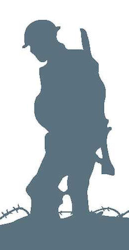Name
Walter Charles Long
1882
Conflict
First World War
Date of Death / Age
30/05/1918
Rank, Service Number & Service Details
Private
126937
Machine Gun Corps (Infantry)
Awards: Service Medals/Honour Awards
British War and Victory medals
Cemetery/Memorial: Name/Reference/Country
ANNOIS COMMUNAL CEMETERY
I. B. 20.
France
Headstone Inscription
None
UK & Other Memorials
Hemel Hempstead Town Memorial,
St Mary's Church Memorial, Hemel Hempstead,
St Paul's Church Memorial, Hemel Hempstead
Pre War
Walter Charles Long was born in Grasmere, near Kendal, Westmoreland in 1882, the son of Jacob and Sarah Jane Long and one of four children.
On the 1891 Census the family were living at Above Beck Cottage in Grasmere and his father was working as a General Servant. By 1901 they had moved to 3 Market Street, Kirby Lonsdale, Westmoreland and his father was working as a Groom & Gardener Domestic. Walter was then working as a Draper's Apprentice.
He moved to Oxford to work as a Draper and it was here that he met his future wife, Maude Annie Judd, a farmer's daughter and they married on 29 June 1914 at St Giles Parish Church, Oxford. He gave his address as Alexandra Road, Hemel Hempstead and his occupation as Draper having moved there to work for George Rolph who ran a general drapery store at 85 to 89 High Street, Hemel Hempstead. After their marriage, Walter and Maude lived at Scarsdale Villa, 33 Herbert Street, Hemel Hempstead. Their son Eric Walter was born on 18 May 1915 and baptised on 6 June 1915 in Hemel Hempstead.
Wartime Service
In 1915 Walter attested for military service under the Derby Scheme (under which military service could be deferred), but he was unsuccessful and his application was rejected. After the Military Service Act was passed in May 1916, he became eligible for call up at which point his employer George Rolph appealed to the local Military Services Tribunal to seek exemption for Walter as he claimed Walter's call-up would adversely affect his business, having already lost two of his employees to the war. After an adjournment the case was dismissed and Walter was eventually called up in June 1917.
He went to Watford to enlist and joined the Bedfordshire Regiment, later volunteering for the Machine Gun Corps. He was sent for specialist training at Grantham, Nottinghamshire and having completed his training he was sent to France, probably in late 1917 or early 1918.
On 27 May 1918 the Germans began a bombardment of the Allied front lines during which the British suffered heavy losses. This was followed by phosgene poison gas bombs, and then an assault by 17 German divisions. The Allies were unable to stop the attack and the Germans advanced through Allied lines, making territorial gains of more than 15 kilometres by nightfall. Over 800 guns were captured by 30 May, along with over 50,000 Allied soldiers, of which Walter was one. He was taken to a prisoner of war camp where he died soon after arrival. His death was confirmed at the end of war, on 11 February 1919. He was said to have died from "General weakness and aedema [pulmonary oedema] contracted whilst on active service", most likely caused by exposure to phosgene gas. Official records give his date of death as 30 May 1918, aged 36, in Germany. His body was then taken from the prisoner of war camp and reinterred in Annois Communal Cemetery, Aisne, France, near where he had fought his last battle.
Additional Information
His widow received a war gratuity of £5 and pay owing of £7 1s 3d. She also received a pension for herself and her son of £1 0s 5d a week.
Acknowledgments
Brenda Palmer
Jonty Wild, www.hemelheroes.com.



